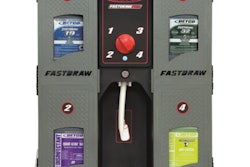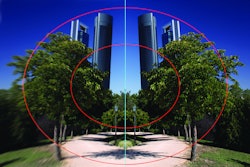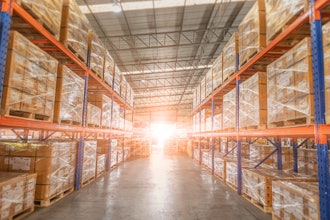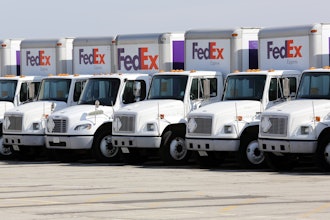“Going green” is an important business goal, as everyone understands the importance of minimizing the environmental impact of their business. Efforts at reducing carbon emissions, recycling and purchasing green products serve as common examples of ways in which many businesses try to be more eco-friendly. However, more and more firms are finding that automating their warehouses and distribution centers offers a great way to go green while adding efficiencies and savings to operations. In many ways, going green can change accounting ledger entries from red to black.
Consider the operational benefits of an Automated Storage & Retrieval System (AS/RS) and its accompanying Warehouse Management System (WMS) software. The AS/RS-WMS duo maximizes utilization of storage space, allowing businesses to do more with the facilities they already have. How is that possible? A modern AS/RS offers designs that adapt to every business model and product inventory. The firm’s mix of fast-, medium- and slow-moving products dictates design, not a material handling vendor’s preconception of optimal warehouse layout. Moreover, the AS/RS need not be identically configured across an entire warehouse or distribution center. Hybrid designs have the ability to store products single deep, double deep or up to 12 loads deep in the rack structure, as well as use a single crane or two in any aisle.
Efficiencies next derive from rack entry vehicles that can quickly transport pallets (or any other unit) in and out of the storage rack. Notably, today’s technology makes it possible to move two pallets/loads at a time. Beyond faster throughput, the AS/RS-WMS combination reduces operating costs from reduced labor, waste and maintenance costs. Better still, these cost reductions are sustainable over the life cycle of the AS/RS, which is typically 25 years or more.
These operational benefits are the key selling points of AS/R Systems. Less well known, yet equally important, are the environmental benefits that automation provides. Three primary “green” outcomes concern land use, energy consumption and waste production, including hazardous waste.
Land Use
Automated warehouses and distribution centers require a smaller building footprint. On average, AS/RS use translates to reductions in square footage requirements on the order of 40% or more when compared to conventional warehouses storing equivalent product inventories. So, when planning to construct a new facility, the amount of land needed will be less, decreasing the environmental impact. Businesses with existing structures contemplating expansion via a building addition or a new facility can forego construction expenses and additional land use by installing an AS/RS and leveraging existing space more efficiently. Beyond lowering costs, there is less environmental damage and more opportunities to incorporate green space.
The reduced space requirements derive from several factors. First, the AS/RS allows flexibility in terms of the height, length and width of the storage area. Plus, multiple-deep storage lanes make even denser storage possible. Deeper lanes translate to fewer aisles, and aisles occupy a lot of warehouse space that could be used for other purposes including product storage. Minimizing aisle requirements, while concurrently integrating accumulation conveyors and pick tunnels into the AS/RS, allows unused space to be used for production and other purposes. Repurposing space demonstrates yet another way in which automation reduces building size requirements, decreases environmental impact and lowers operating costs.
Energy Consumption
Automated warehouses require less energy to function. Reductions arise from fewer interior lights, less space to heat and cool, and the energy savings made possible by using Storage/Retrieval Machines (S/RMs) outfitted with regenerative braking. These mechanisms allow surplus braking energy to be stored or transferred to the power grid and used by other machines operating on the same grid. Even more savings are possible in refrigerated or frozen warehouses. Here again, regenerative braking contributes to overall savings as does the dense cubic storage an AS/RS allows. Cooling a smaller area is far more energy efficient and less costly.
Waste Production
In conventional warehouses, waste arises from products damaged in handling, accommodations made in product wrapping to allow forklift use, and other outcomes associated with forklift use, such as damage to the building and rack systems as well as battery use. Another often overlooked source of waste derives from human error in order picking. Each mistake has an environmental impact manifested in labor, fuel, re-packaging and shipping costs.
Eliminating fork trucks from the equation lessens opportunities for product damage. The AS/RS retrieves and transports pallets smoothly across the system through the use of S/RMs and conveyors. Their use also prompts less stretch wrap consumption, as securing the pallet is not as great a concern. In turn, it decreases the manufacture of plastic film, which does not decompose and fills our landfills.
The WMS software in an automated warehouse controls product flow. In optimizing the movements within a warehouse, the WMS contributes to savings by virtually eliminating waste and damage. It makes order picking more accurate, which means fewer product returns arising from errors. Worker safety benefits, too, since employees do not have to enter the racks, and automated picking stations reflect ergonomic designs.
As mentioned previously, damage – and waste – is an accepted consequence of forklift use that has an environmental impact. So, too, do the batteries that power them. Battery charging stations expend energy, and battery replacement means the old batteries will add to our landfills. Depending on battery construction, another ecological concern could be hazardous waste and its deleterious environmental effects.
Today’s far-sighted business leaders see the “green” attributes of warehouse automation - and the financial gains that being environmentally responsible can carry. For them, being green is putting them in the black through lower costs and a more competitive marketplace posture. Warehouse automation evidences the principle that it is possible to do good while doing well.
Dan Labell is the president and owner of Westfalia Technologies, Inc., a leading provider of logistics solutions for plants, warehouses and distribution centers since 1992. Westfalia is the expert to consult for unparalleled warehouse automation solutions featuring our advanced AS/RS/conveyor designs and Savanna.NET® WMS software. To contact Dan, email [email protected].






















